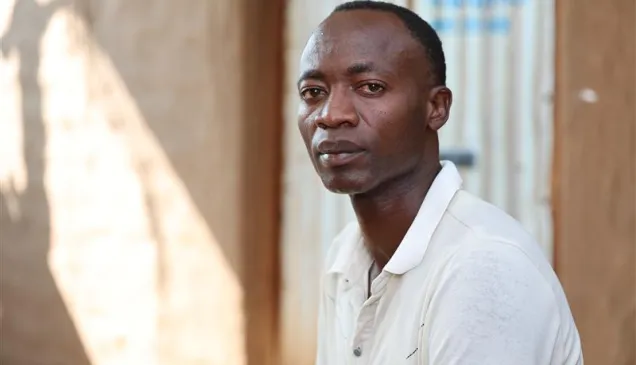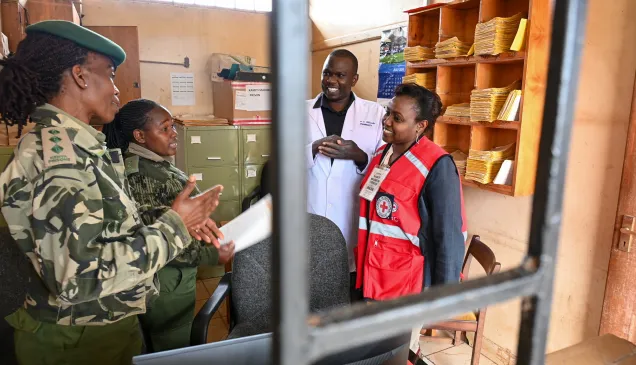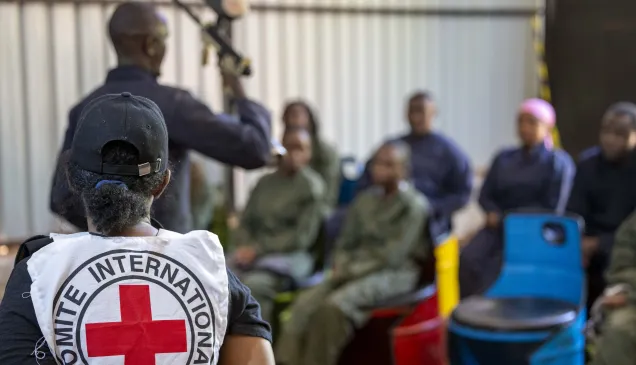War in Cities: the role of humanitarian actors in avoiding and minimizing effects on vital infrastructure and communities
From 18-24 April 2017 the ICRC convened professionals and policy makers in the humanitarian sector from across the world, for the 21st ICRC Course on International Humanitarian Law (IHL) for humanitarian practitioners and policy makers in Naivasha, Kenya. The closing event, held in Nairobi and entitled "War in Cities: the role of humanitarian actors in avoiding and minimizing effects on vital infrastructure and communities", was part of ICRC's 2017 conference cycle on War in cities.
Moderator
• Anne Quintin, Legal Training Advisor, ICRC
Panelists
• Commissioner Ayensu, Member of the African Union Commission on International Law (AUCIL)
• David Evans, Emergency Director UN-Habitat, Nairobi
• Dr Eve Massingham, Legal Advisor, ICRC
In situations of armed conflict and violence across the world, humanitarian actors operate amidst recurring violations of IHL. Increasingly, these operating environments are urban centers. The impact of conflict, when it takes place in cities, is particularly devastating, not just because of the immediate effects of each attack, but also because of the effects on the infrastructure which is critical to the life and livelihoods of the civilian population.
We live in the century of the city. Two-thirds of the global population is predicted to live in cities by 2030 while two-thirds of the global GDP is generated from 600 cities across the world. In developing countries, about 96% of urban growth is expected to take place in developing countries. Out of 65 million people who are forcibly displaced, 75% live in urban areas. And most significantly, about 50 million people suffer the consequences of armed conflict which is increasing, all over the world, in the urban environment.
"Once you hit the capital city of a country or you disrupt life there, you have really gone to the nerve center of the impact of conflict," Commissioner Ayensu stated. "Once you destroy, you have to rebuild." "The more we can understand the complexity of the situation of urban environments the better we can respond to the humanitarian needs" highlighted Anne Quintin.
The use of explosive weapons in densely populated areas
The role of IHL is to minimize the humanitarian consequences of war, not just on the battlefield, but today, sadly, also in cities. One way of doing this is through regulation of the weapons which can be employed in conflict. Weapons law provides that weapons which are inherently indiscriminate, which cause unnecessary suffering or which cause widespread, long-term and severe environmental damage are prohibited. The law also provides that use of weapons, whilst not being inherently in breach of any of these principles, in such a way as to breach the conduct of hostilities principles of distinction, proportionality and precaution, is also prohibited.
Of concern to the ICRC is the use of explosive weapons in densely populated areas. While no clear prohibition exists, and such weapons are not inherently unlawful under IHL, the ICRC sees that their use in densely populated areas has significant likelihood of indiscriminate effects and therefore should be avoided.
Dr. Massingham, also drew attention to the little addressed provision of IHL which requires precautions to be taken against attack and the 'town planning' requirement for military objectives and civilian objects to be separated. Dr. Massingham noted that this issue has been addressed at length by Professor Jensen in the most recent edition of the ICRC's academic journal, the International Review of the Red Cross (IRRC).
What can be done?
The panel focused on two themes to help address the issue. First, Dr. Massingham noted that humanitarian actors, among other key actors, can play an important role through their understanding and promotion of the rule of IHL. These rules create both rights and obligations for humanitarian actors and they, therefore, need to be well understood by them. Further, a good understanding of the impacts of particular weapons and tactics and their effects can help humanitarian workers to ensure that their activities are better able to protect the civilian populations in urban centers, ensure continuity in provision of vital services in times of conflict, and ensure that their dialogue with arms bearers is able to articulate the disadvantages of IHL violations.
Second, David Evans discussed why "resilience from day one is super important". He posed the question, "How can we be innovative with infrastructure and utilities so that during conflict, they remain resilient or they are easily fixable?" Indeed, war in cities has its consequences and we should look at resilient measures to mitigate the effects. Commissioner Ayensu noted some innovative solutions in West Africa that had benefits for both sustainable cities concepts generally but also create resilience in conflict situations. She spoke of the proliferation of boreholes instead of central systems and extensive pipeline networks, renewable energy resources such as solar energy in Sierra Leone and the policy of one district, one industry. The Commissioner also particularly mentioned initiatives in Rwanda and Liberia. David Evans noted ideas like UN-Habitat city profiles which look at the urban functionality of cities and are kept updated to enable visual identification of the infrastructure that has been hit.
More discussions on War in Cities to follow in our upcoming conferences.



